|
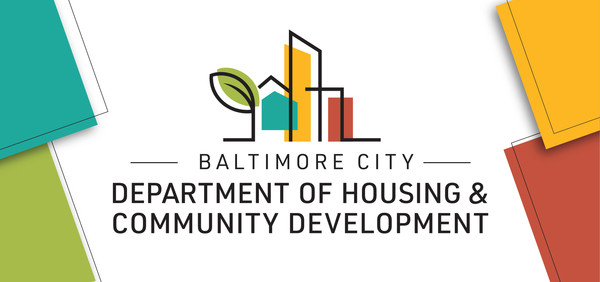 QUARTERLY UPDATE VOLUME II - Issue 4
|
|
|
My thanks go out to all of our community partners and everyone working to keep the city moving forward. We're now in the final quarter of this calendar year, and while COVID-19 continues to affect nearly every aspect of our lives, DHCD remains focused on the agency's vital work. Just a few of the things we've advanced over the last six to eight weeks include:
- Directing additional CARES Act funds toward eviction protection programs. Mayor Young announced the effort in early September, which provides $30 million to keep people housed during the pandemic crisis;
- Stewarded through Tax Increment Financing (TIF) legislation making $105 million available for the Perkins Somerset Oldtown Transformation plan;
- Approved the sale of 81 properties in Park Heights as part of a 17-acre development;
- Issued a Notice of Funding Availability making up to $2 million available for Community Land Trusts;
- Celebrated the closing on financing for the long-awaited Renaissance Row development in Park Heights with a groundbreaking event;
- Marked the demolition of East Baltimore's McGarvey Industrial Park in support of the Equality Equation's vision for the area;
- Helped shape legislation requiring the marking of all vacant buildings with QR codes, providing expanded information about owners and property history to the public; and
- Issued a second round of Community Catalyst Grants, providing $7.2 million in funding opportunities to support neighborhood-based organizations. Applications are due by Dec. 18.
Many of our activities are further highlighted or expanded upon below. We've also begun the arduous process of preparing for the Fiscal Year 22 budget process. I'll keep you informed about that as we go.
As we sprint toward the end of 2020, I know we will all remember this year as one of immense challenges and change. I wish you and your loved ones health, safety, peace, and happiness as we all continue to meet this challenging time together.
|
|
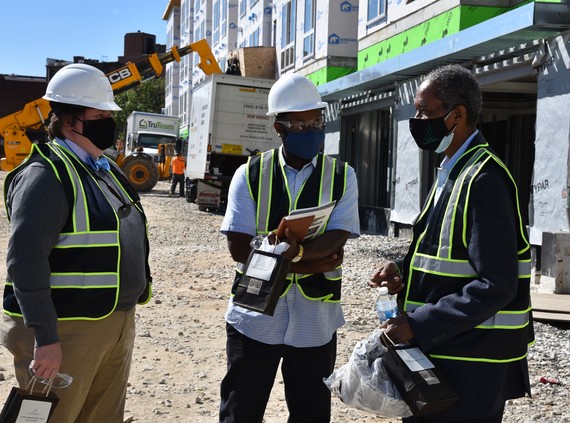 DHCD Acting Commissioner Alice Kennedy, Delegate Cory V. McCray (District 45), and Councilman Robert Stokes, Sr. (District 12), chat before touring progress on the PSO Transformation Area construction site.
A community benefits tax increment financing (TIF) package for the redevelopment of 244 acres in East Baltimore received approval from the Baltimore City Council on October 5.
The TIF legislation designates the Perkins-Somerset-Oldtown (PSO) Development District, creates the authority to issue bonds, and forms the PSO Special Taxing District, which earmarks automatically generated tax revenue from the new development to pay for the bonds that will finance the project.
The $105-million TIF package will provide funding to create a new, vibrant, mixed-income community that includes 652 replacement units at Perkins and Somerset Homes and 590 affordable housing units spread throughout Perkins, Somerset, and Oldtown. Additionally, the plan calls for a new 21st Century school, new community amenities and opportunities, neighborhood improvements, and a supportive services plan aimed at helping families meet their goals.
This project will also generate new opportunities for Baltimore residents. Revitalization activity will create more than 3,000 jobs during construction and close to 1,000 permanent jobs from the project's hotel, office, and retail components. Upon completion, the PSO Transformation Plan is anticipated to yield nearly $1 billion in investment in the area.
Learn more.
|
|
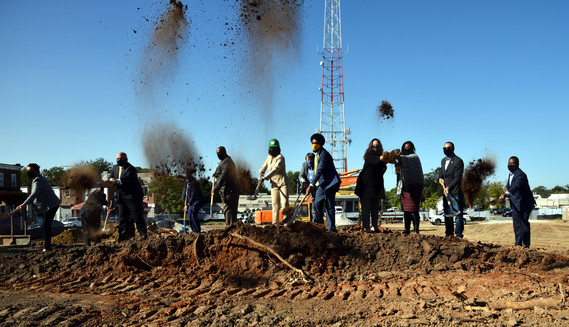 City and State officials, community partners, and stakeholders celebrate the groundbreaking for Renaissance Row Apartments with Park Heights.
Community development activity is progressing in the City's Park Heights Impact Investment Area.
Between the 4300 blocks of Pimlico Road and Park Heights Avenue, at the intersection of Rosewood Avenue, sits an expansive, vacant, City-owned development site covered in brown dirt. But soon, there will be a brand-new, four-story housing development on the grounds, representing more than $21 million of investment for Park Heights.
In September, DHCD joined City and State officials, partners, and the Park Heights community to break ground on Renaissance Row Apartments. This redevelopment project signals the arrival of long-awaited transformative change and is part of a larger, $100-million redevelopment effort in an underinvested area of Baltimore City.
The City provided $2.15 million in Affordable Housing Program Bond funds and $1 million in a Video Lottery Slots Funds loan to Park Heights Renaissance, the community nonprofit, to help finance the project. Additionally, DHCD, in partnership with the State, utilized Project C.O.R.E. (Creating Opportunities for Renewal and Enterprise) funds to prepare the site. DHCD razed several blighted properties to make way to construct the new 84-unit building that will provide affordable housing to low-income families. Penrose, LLC, a national affordable housing developer, is leading the project. View event photos.
|
|
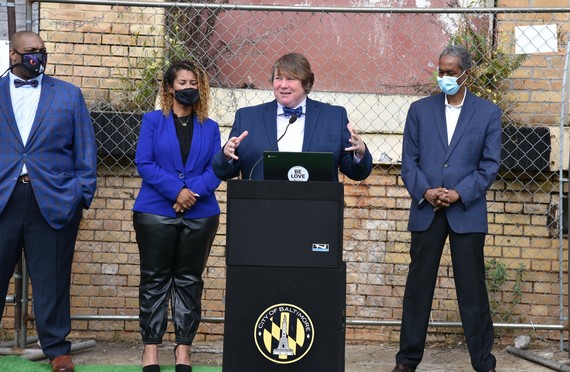 Acting Commissioner Alice Kennedy speaking at the East Baltimore Equaliy Equation Kickoff Event.
In speaking at a demolition event on September 26, Acting Commissioner Kennedy shared that one of DHCD's foundational prescripts is that we’ve embraced the fact that "equity in housing and community development must begin with the acknowledgment that the history of slavery and institutional racism is undeniably woven into the fabric of present conditions. The challenge we are working to meet is to ensure that the past does not define the future.” (See Agency Equity Statement.)
Although the discussion of racism and its lingering effects can be uncomfortable, Acting Commissioner Alice Kennedy readily addressed the subject. While speaking to attendees of the East Baltimore Equality Equation’s kickoff event last month, the acting commissioner acknowledged the long-standing, race-based barriers and policies that still devastate City neighborhoods.
DHCD is working with Elizabeth and Pless Jones, Jr., Councilman Robert Stokes (District 12), and State and community partners in support of the Equality Equation. Through the Equality Equation, Mr. and Mrs. Jones are leading efforts to bring a community-led vision for Broadway East to fruition. The goal is to redevelop 200-plus acres into a thriving community that supports existing homeowners, affordable housing, inclusionary zoning, and rental subsidies.
Stakeholders met with the community to kick off Phase I of the project with the demolition of the McGarvey Industrial Park Warehouse. Demolishing the enormous, blighted property — located on Belair Road near E. North Avenue — signals the advancement of transformational investment within the DHCD East Impact Investment Area.
Razing the complex is just the beginning of the plans for the Broadway East Neighborhood. Phase I includes constructing a workforce development training center on the former site of the demolished warehouse. As part of three phases, the project also calls for converting hundreds of vacant lots in Broadway East into community anchors such as a recreation center, health clinic, and sustainable green space along with single-family homes.
|
|
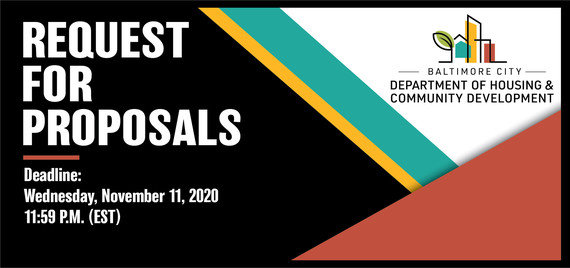 In search of housing and mixed-use development plans for Broadway East, Coldspring Newtown, Fells Point, Grove Park, Harlem Park, and Marble Hill, DHCD issued its Fall 2020 Requests for Proposals (RFP). The City is seeking creative and competitive proposals from experienced and qualified developers with a proven track record in delivering urban development projects.
This RFP offers key sites — located in the City’s Eastern, Western, and Park Heights Impact Investment Areas — that have ample assets to leverage and are poised for future development, transformative growth, and investment. Through the RFP process, the City seeks to collaborate with developers and community partners to capitalize on the growing strengths and existing assets in these neighborhoods.
DHCD scouted potential developer interest in the various locations in Spring 2020 through its Expression of Interest process. The Agency identified several City-owned properties with sufficient interest that resulted in the issued RFPs.
The Development Division will evaluate proposals by considering many factors, including but not limited to the diversity of development teams, proposed financing planning structure, and interest in accomplishing specific goals and objectives of the respective neighborhoods and their stakeholders. DHCD will also work closely with the Commission for Historical Architectural Preservation on sites within designated historic districts.
Submissions are due by Wednesday, Nov. 18, at 4 p.m. (EST). Learn more.
|
|
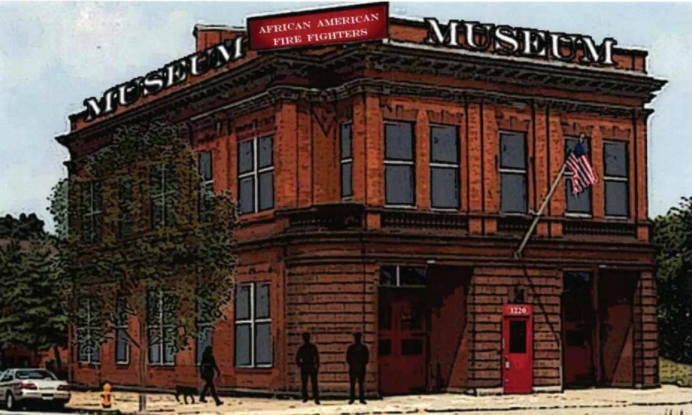 The African American Fire Fighters Historical Society seeks to develop an abandoned firehouse at 1220 E. Oliver Street into a museum honroring firefighters of color.
The City recently approved two notable Land Disposition Agreements (LDA) designed to eliminate existing blight and to transform neighborhoods.
DHCD has been pleased to work with the African American Fire Fighters Historical Society (AAFFHS) toward establishing the first museum on the east coast that celebrates Black firefighters' contributions. Through the LDA, the City is conveying 1220 E. Oliver Street — an old, abandoned firehouse — helping the historical society to realize its dream. AAFFHS will renovate the old firehouse into a museum that collects, preserves, and disseminates historical data, memorabilia, and information relating to the contributions made by firefighters of color.
With Heart's Place Services, Inc., the City conveyed 27 vacant lots for development projects in the 1300 block of Holbrook Street. Heart’s Place Services — in partnership with developer Mark Sapperstein — will use the land to create a small development of container homes (Hope Village) that supports homeownership for displaced, low-income families. Hope Village will feature 13 single-family homes that are constructed out of converted shipping containers.
These investments will lead to an immediate improvement in the quality of life for city residents and spur additional future development opportunities.
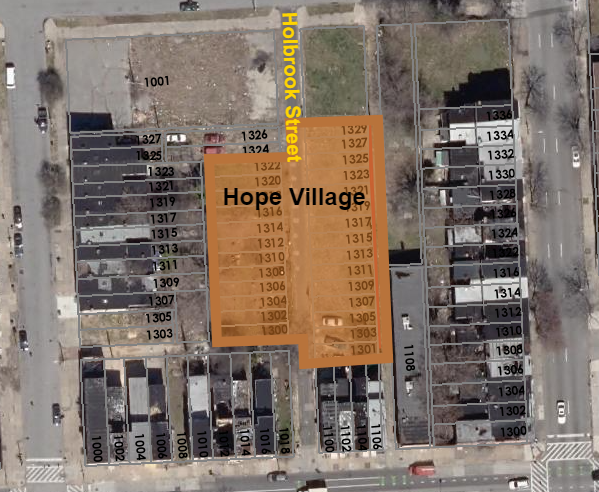 Heart’s Place Services, Inc. plans to develop vacant, City-owned lots in the 1300 block of Holbrook Street into affordable, single-family housing units for low-income families.
|
|
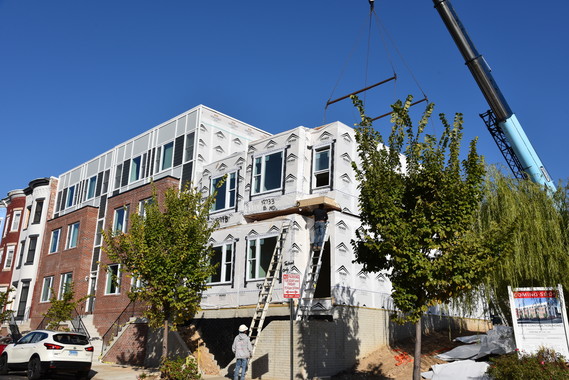 Maryland Custom Builders, Inc. installing two additional prefabricated townhome units in East Baltimore Midway.
Maryland Custom Builders, Inc. is advancing its revitalization efforts in East Baltimore Midway. The developer recently installed two more modern, modular townhomes at E. 21st and Boone Streets and will drop in the final two units by the end of the year. This effort promotes further economic development in the City’s East Impact Investment Area and helps with the City’s commitment to blight elimination.
In 2015, DHCD began a partnership with Maryland Custom Builders to construct eight three-story, prefabricated homes on formerly vacant, City-owned lots in the 500 block of E. 21st Street. Maryland Custom Builders installed the first set of townhouses at the development in 2018.
Each pair of townhomes — made of six rectangular, prefabricated boxes that form two separate residences — are assembled at a factory. Once the homes are ready for installation at the development site, the boxes are stacked, aligned, and connected onto a concrete foundation. The installation is completed within a few hours. Then workers spend the next couple of months bricking the facades, connecting the pipes and wiring, adding a garage, and finishing the interiors with cabinets and other fixtures.
Through this project, DHCD is investing in a long-disinvested community and is building off the successful community revival activity in Greenmount West, Barclay, the Arts District, and Central Baltimore. The City also turned non-performing assets into an opportunity to spur private investment and to ignite revitalization opportunities for the surrounding target areas.
Six of the eight townhomes are already installed, and four are occupied. The developer anticipates completing the project in early 2021.
|
|
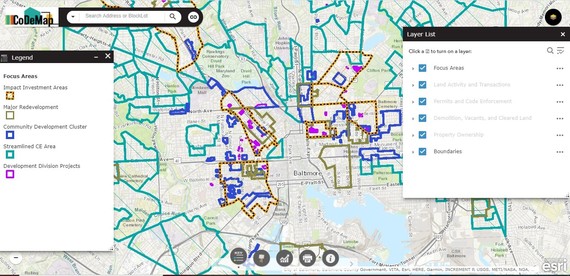 The upgraded version of CoDeMap allows users to customize preferences to suit individual needs.
DHCD continues shaping how City agencies, community partners, and local developers use technological advancements to further community development initiatives and projects.
In 2015, DHCD began utilizing codeMap to gather, manage, and analyze information to help users make data-informed decisions. Rooted in the science of geography, codeMap paints an accurate picture of community development happening in specific neighborhoods. The GIS tool uses multiple data sets to spatially portray on-ground conditions, real estate activity, and community development opportunities on a parcel-, block-, neighborhood-, and citywide level.
After a continuous focus on enhancing the application and consultation with internal and external users, DHCD’s Research and Analytics team recently worked to upgrade the tool — now known as CoDeMap (Community Development Map). The enhanced application is more user-friendly and is designed to meet a wide range of users' needs. Users can create personalized maps and CoDeMap now memorizes and saves personal preference settings. The application also allows users to draw and take notes directly on the map, opens and downloads entire datasets or subsets based on geography, and lets users view a specific dataset description. CoDeMap even creates a printable PDF of your map.
Users can watch DHCD’s CoDeMap Training Video before trying the new CoDeMap, which is located at https://cels.baltimorehousing.org/codemapv2ext/. The “classic” codeMap site remains available for use thru March 2021.
|
|
|
|
|